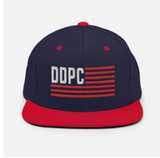You finally brought your new puppy home, and it’s everything you imagined—cuddles, excitement, and those adorable puppy eyes. But then the reality of training sets in. Accidents on the carpet, constant chewing, and that heartbreaking sound of puppy whining at night. If you’re feeling overwhelmed, you’re not alone. In fact, a study published in Frontiers in Veterinary Science found that between 72% and 85% of dogs exhibit at least one type of problem behavior. (Frontiers in Veterinary Science)
The good news? Puppy training with positive reinforcement makes it easier! By reinforcing positive behaviors with rewards, like affection, dog chews, and playtime, you’re building a foundation of trust and mutual understanding that makes learning (and living together) enjoyable for both of you.
What is positive reinforcement dog training?
Positive reinforcement is a training method that rewards desired behavior to encourage repetition. Instead of using fear or punishment, this approach motivates dogs to learn by associating good behavior with enjoyable outcomes.
"Punishment can lead to fear and aggression in dogs. Positive reinforcement is a more effective and humane training method." – Ian Dunbar, veterinarian and dog behaviorist
According to a study published by the Journal of Veterinary Behavior, only 8% of dogs trained with positive reinforcement methods exhibit stress-related behavior, compared to 65% of dogs trained using negative reinforcement methods. (Journal of Veterinary Behavior)
How does it work?
Whenever your dog follows a command or exhibits good behavior, you reward them immediately. Rewards can include:
- Treats – High-value treats like Devil Dog Pet Co.'s Himalayan dog chews, bully sticks, or elk antlers make excellent training incentives.
- Praise – A cheerful "Good boy!" or "Good girl!" helps reinforce good behavior.
- Playtime – Tug-of-war or a favorite toy can serve as an effective reward.
- Affection – Some dogs respond best to belly rubs and head pats.
By using rewards that are meaningful to your dog, you can encourage obedience and build trust without creating fear or anxiety.
Why positive reinforcement is the best training method
Encourages good behavior without fear
Unlike punishment-based techniques, positive reinforcement dog training makes training an enjoyable experience for your dog. A study published in Applied Animal Behaviour Science found that dogs trained with rewards exhibit fewer stress-related behaviors and are more eager to learn.
Strengthens your bond with your dog
Dog training is absolutely necessary with every dog. Just like with your child, training creates consistent expectations, teaches them to rely on you for direction, and helps build a lifelong relationship based on trust and communication. Reward-based training helps create a secure and positive environment, making your dog more eager to please.
"Reach deeper during training and find a way to connect with your dog from the heart, not a leash and a collar." – Zak George, professional dog trainer and author
Reduces behavioral issues
Dogs thrive on consistency. Positive reinforcement provides clear guidance on expected behaviors, reducing frustration and unwanted habits like excessive barking or destructive chewing. Providing the best long-lasting dog chews, such as Devil Dog Pet Co.'s Himalayan dog chews, deer antlers, or elk antlers, can also help redirect chewing behavior in a constructive way.
Best practices for positive reinforcement training
-
Timing is everything
Dogs live in the moment, so it’s crucial to reward them immediately after they display the desired behavior. Delayed rewards can confuse your pup and weaken the training process. -
Be consistent
If one family member allows the dog on the couch while another scolds them for it, your pup will struggle to understand the rules. Ensure that everyone in your household follows the same routines and training methods.
"If people in the household aren't on the same page, it's not going to work." – Amanda, Devil Dog Pet Co. -
Avoid over-reliance on treats
While treats are a valuable tool, it's essential to mix in verbal praise and affection. Rotating different reward types ensures that your dog listens even when food isn’t available. This approach helps your dog associate good behavior with a variety of positive outcomes, keeping them engaged and motivated. -
Keep training sessions short & fun
Dogs, especially puppies, have short attention spans. Some of the best puppy training advice includes keeping training sessions engaging and rewarding. Aim for multiple short training sessions (5–10 minutes) throughout the day instead of one long session. Keep it positive and end on a good note! -
Use the right training rewards
Not all treats are created equal. High-value, nutritious treats like Devil Dog Pet Co.'s yak chews, elk antlers, or bully sticks make great motivators while also supporting your dog’s dental health and reducing anxiety.
"Chews are a mental release for them as well." – Amanda, Devil Dog Pet Co
Common mistakes to avoid
- Sending mixed signals – Using different commands for the same behavior confuses your dog. Stick to one word or phrase per command.
- Losing patience – Dogs learn at their own pace. Stay calm and celebrate small wins.
- Ignoring bad behavior – While positive reinforcement focuses on rewarding good behavior, it's also important to redirect unwanted behaviors with clear guidance.
When positive reinforcement isn’t enough
While positive reinforcement works for most dogs, some behavioral issues—like aggression or extreme anxiety—may require additional training methods. In these cases, consulting a professional trainer or animal behaviorist will be beneficial.
"There are some situations where other methods are absolutely helpful." – Amanda, Devil Dog Pet Co.







